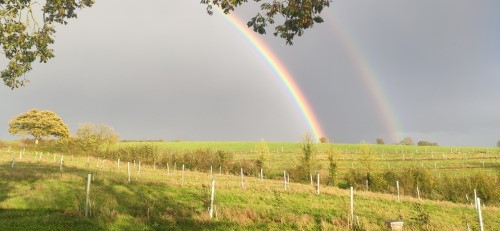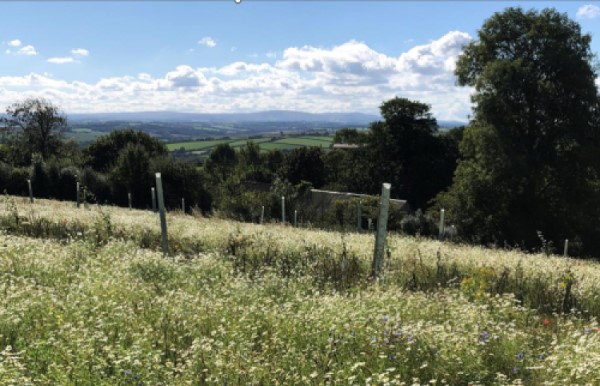- Home
- Agroforestry experiences: Elston Farm, a livestock and arable farm in Devon
Agroforestry experiences: Elston Farm, a livestock and arable farm in Devon
Find out how a farm in Devon is integrating agroforestry with the production of arable crops and livestock. Learn about the silvopasture network, what tree species are used and how the system is managed.
About Elston Farm
Elston Farm in mid-Devon (Copplestone) covers 64 hectares on light, loamy, red soils. It has been in an arable rotation for over 50 years. On top of cereals, the farm grew swedes, potatoes, and maize. It now has a livestock enterprise.
Andy Gray runs the farm. A thirteenth-generation farmer from Devon, he moved to Elston in 1991 to manage the land and run the meat business.
The farm adopted minimum tillage in 2008. It visibly improved soil structures, allowing greater infiltration of rain and a dramatic reduction in soil loss. In 2020, the system moved to a regenerative cattle and deer farm with the addition of wildflower/pollen mixes in stewardship and agroforestry.

Andy’s agroforestry journey
Andy’s journey to agroforestry stemmed from curiosity. He wanted to learn how the inclusion of trees could benefit his farm’s soils and livestock.
In 2021, 5,600 trees were planted as part of an Innovative Farmers Field Lab trial: the Devon silvopasture network.
The Devon silvopasture network
The network comprises seven farms using silvopasture to try to improve productivity, soil function and biodiversity in a long-term (12-year) trial.
It is run in partnership with Rothamsted Research, the Organic Research Centre (ORC), the Farming and Wildlife Advisory Group (FWAG) and the Woodland Trust (which provided the trees and tree guards).
The network agreed three planting designs, which are standardised to enhance the research.
Tree species and planting
On Elston Farm, trees are planted on 10.5 hectares in rows of 14 metres, spaced 3 metres apart (alley planting).
The wide spacing could permit crops to be grown (although not as easily as in a monoculture). However, in five years the plan is to graze the planted area: it is designed to benefit livestock. The alley layout spreads the soil and shade benefits throughout the field.
Andy credits the high tree survival rate (92%) to good establishment practices. Within a couple of weeks of the trees arriving they were planted (by a team of 60 volunteers). Sturdy rabbit protection and diligent grass control were also key, with grass around the trees sprayed off in the first two seasons. Grass can compete with young trees for moisture and nutrients. Mulching is an alternative to spraying.
All the trees planted are indigenous: oak, alder, Scots pine, downy birch, lime and field maple. These are alternated with bushes of spindle, elder, holly, willow, hazel and elm. Some (350) walnut, chestnut and apple trees have also been planted.
The team has also planted three hawthorn bushes around the trees to provide a natural alternative to tree guards and protection from bark stripping or rubbing.
To date (June 2024), the trees are still too young to determine their productivity. However, the environmental benefits are already apparent, with improved worm numbers, better soil porosity and more beneficial insects.


